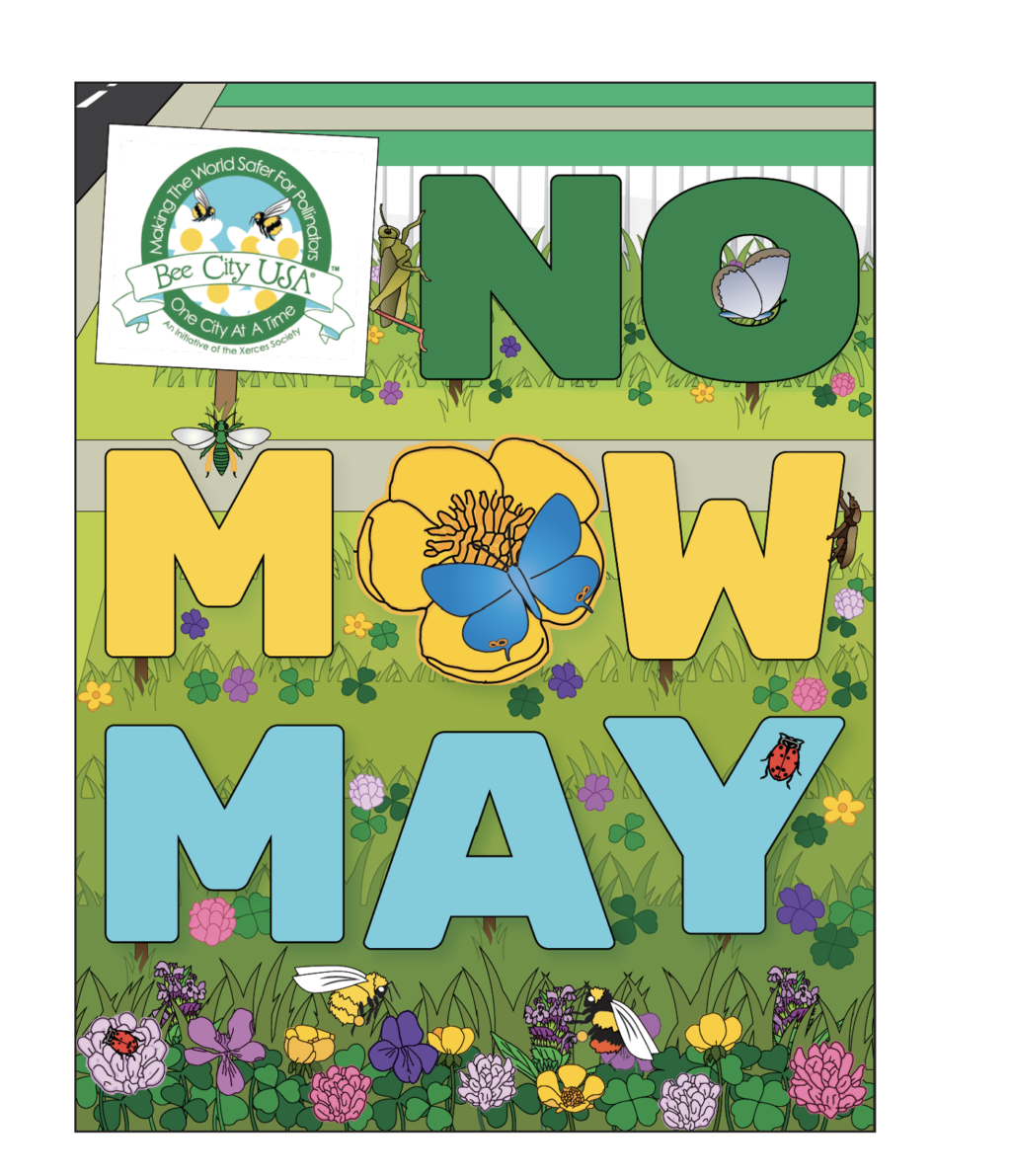No Mow May Aims To Protect Pollinators

Photo: beecityuse.org
Some American communities are starting to organize around “No Mow May”, a campaign that encourages people to wait to mow their greenspace until after the first round of flowers have bloomed. Bees are facing catastrophic declines. In North America, nearly one in four native bee species is imperiled, according to the Center for Biological Diversity, partly because of habitat loss, pesticide use, climate change and urbanization. Lawns typically provide poor habitat for bees, but if allowed to flower, lawn weeds — perhaps better characterized as plants other than grass — can provide rare spring food for bees emerging from hibernation. Mowing one’s lawn less in the spring helps to create bee-friendly habitat and can increase the abundance and diversity of wildlife including bees and other pollinators.
No Mow May is a conservation initiative first popularized by Plantlife, an organization based in the United Kingdom. The event is now gaining traction across North America. The goal of No Mow May is to allow grass to grow unmowed for the month of May, creating habitat and forage for early season pollinators. This is especially important in urban areas where floral resources are often limited.
Several Wisconsin Cities have committed to No Mow May. In 2020, Appleton, Wisconsin, became the first US city to formally embrace the program. Over 435 property owners participated in the campaign, and Lawrence University, an affiliate of Bee Campus USA, partnered with the city to conduct research on the impact of No Mow May on pollinators. Researchers observed the abundance and diversity of bees to be considerably higher in the yards of properties participating in No Mow May. Participating yards had three-times higher bee species counts and five-times higher bee abundance than nearby parks that had been mowed. Click here to download the study. Encouraged by their success in 2020, Appleton attracted even more participants in 2021.
The Ann Arbor, Michigan city council voted unanimously in 2021 to endorse a No Mow May campaign and encouraged property owners across the city to refrain from mowing lawns through May, recognizing that dandelions and other wildflowers, including the prolific crocus, can be a vital early food source for pollinators after a long winter.
The efficacy of reducing mowing can be expanded by altering the composition of one’s lawn to include more flowering species. A “bee lawn” may include Dutch clover (which captures nitrogen and helps feed the lawn) as well as other low-growing flowering plants such as creeping thyme (Thymus spp.), self-heal (Prunella vulgaris), and others. Some plants, such as native violets (Viola spp.) may already be present and should be encouraged as they are valuable host plants for fritillary butterflies. For more information about creating a flowering lawn please see the resources at the end of this blog.
In addition to benefiting pollinators, reducing mowing frequency will save water, help your lawn become more resilient to drought, and reduce emissions from gas-powered lawn equipment that often lacks the emission reduction equipment found on larger engines.
For additional stories on No Mow May look here and here.
The Amherst Town Council voted to designate Amherst a “pollinator friendly community” in June of 2020.
For information on pollinator advocacy in Western Massachusetts, look here.
For an alternative take on No Mow May see the letter by John Root in this issue of the Indy.

And consider getting a grass whip for some quiet, meditative exercise in June — and July and August and…!